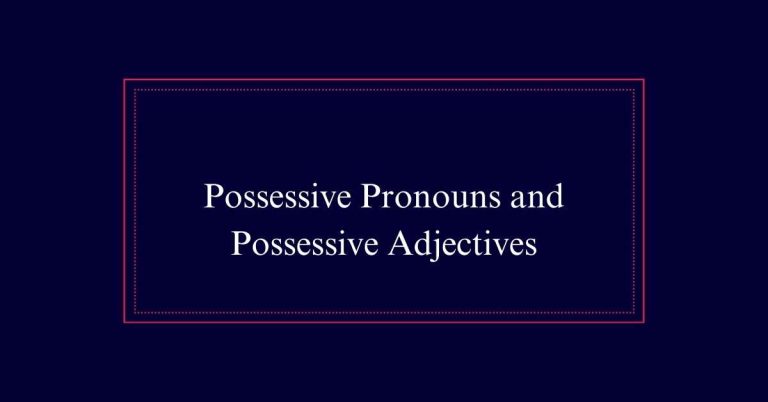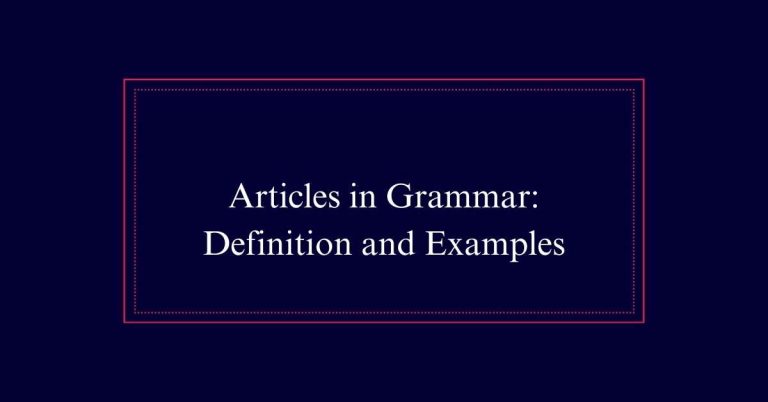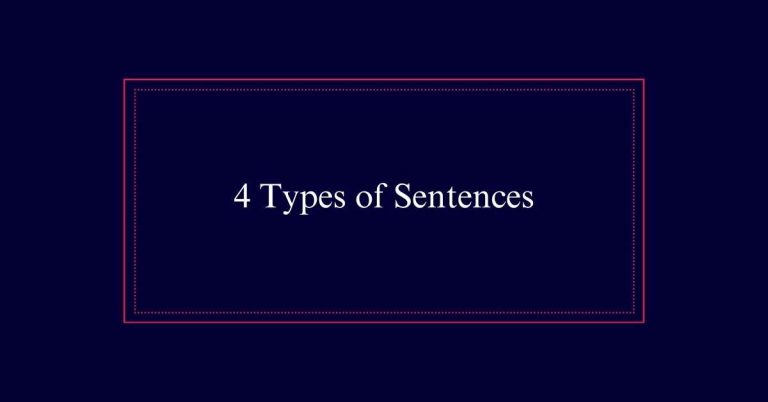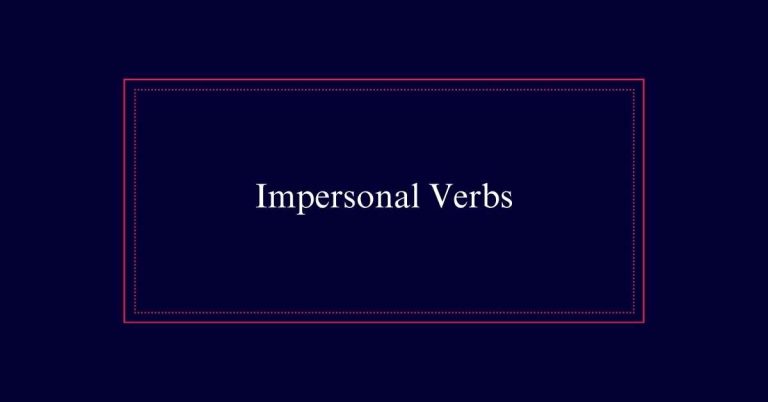Distransitive Verbs
Ditransitive verbs require two objects: a direct object and an indirect object or object complement. The direct object follows the verb and receives the action. The indirect object comes before the direct object and can often be rephrased using “to” or “for.” For example, in the sentence “She gave her friend a gift,” “friend” is the indirect object and “gift” is the direct object.
Object complements provide additional information about the direct object. Unlike transitive verbs, which need only one object, ditransitive verbs need both.
Definition of Ditransitive Verbs
A ditransitive verb is a type of verb that takes two objects in a sentence.
These verbs require a direct object and an indirect object or a direct object and an object complement.
The direct object receives the action of the verb, while the indirect object answers questions about the direct object.
For example, in the sentence ‘Sheila sent a package to Joe,’ ‘sent’ is the ditransitive verb.
Understanding ditransitive verbs is essential for constructing grammatically correct sentences.
Unlike transitive verbs, which take only one object, and intransitive verbs, which do not require an object, ditransitive verbs need two objects to convey clear meaning.
Structure of Ditransitive Verbs
The structure of ditransitive verbs involves a direct object and an indirect object or a direct object and an object complement. In sentences with two objects, the direct object receives the action of the verb, while the indirect object answers questions about the direct object.
For example, in ‘Sheila sent a package to Joe,’ ‘package’ is the direct object, and ‘Joe’ is the indirect object.
Alternatively, an object complement provides additional information about the direct object. For instance, in ‘We dubbed Magda Queen of the couponers,’ ‘Magda’ is the direct object, and ‘Queen of the couponers’ is the object complement.
Direct and Indirect Objects
When constructing sentences with ditransitive verbs, understanding the roles of direct and indirect objects is essential. The direct object is the noun or pronoun that directly receives the action of the verb.
The indirect object, on the other hand, answers questions like ‘to whom?’ or ‘for whom?’ regarding the direct object.
Consider the sentence: ‘Sheila sent a package to Joe.’ Here, ‘package’ is the direct object, and ‘Joe’ is the indirect object.
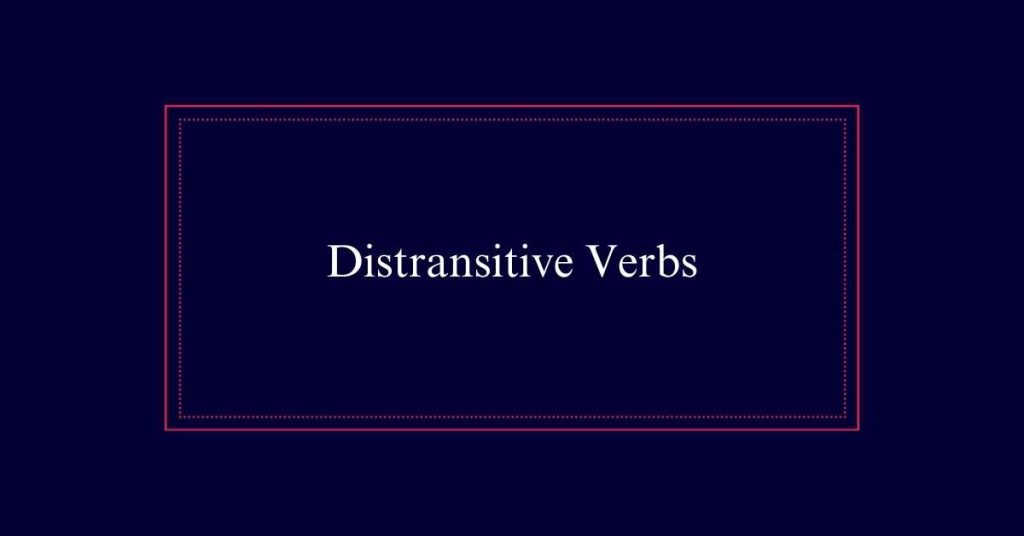
For clarity, note the following points:
- The direct object always follows the verb.
- The indirect object generally precedes the direct object.
- Indirect objects can often be rephrased using ‘to’ or ‘for.’
- Not all verbs can take both direct and indirect objects.
Object Complements Explained
How do object complements enhance our understanding of sentence structure?
Object complements provide additional information about the direct object. They either describe or rename it, adding depth and clarity to the sentence.
For instance, in the sentence ‘The committee elected Sarah president,’ the word ‘president’ is the object complement. It renames the direct object ‘Sarah.’
Object complements are essential in sentences with ditransitive verbs. These verbs take a direct object and an object complement. This structure helps convey more precise meanings.
Consider ‘We painted the room blue.’ Here, ‘blue’ is the object complement, describing the direct object ‘room.’
Ditransitive Vs. Transitive Verbs
Understanding the difference between ditransitive and transitive verbs is crucial for constructing clear and grammatically correct sentences. Ditransitive verbs take two objects, while transitive verbs take only one.
For example, in ‘Sheila sent Joe a package,’ ‘sent’ is a ditransitive verb, with ‘Joe’ as the indirect object and ‘package’ as the direct object. Conversely, in ‘Sheila opened the package,’ ‘opened’ is a transitive verb with ‘package’ as its only object.
Here are key distinctions:
- Ditransitive verbs: Require two objects (direct and indirect).
- Transitive verbs: Require only one object.
- Direct object: Receives the action of the verb.
- Indirect object: Receives the benefit of the action.
Ditransitive Vs. Intransitive Verbs
Unlike ditransitive verbs, intransitive verbs do not require any objects to complete their meaning.
Ditransitive verbs need both a direct and an indirect object to make a sentence complete. For example, in ‘She gave him a gift,’ ‘him’ is the indirect object, and ‘gift’ is the direct object.
In contrast, intransitive verbs stand alone without needing any objects. For example, in the sentence ‘He sleeps,’ the verb ‘sleeps’ does not need an object to make sense.
Indirect Object Examples
An indirect object in a sentence typically answers the questions ‘to whom’ or ‘for whom’ regarding the direct object. In English, the indirect object usually appears between the verb and the direct object.
Here are a few examples to illustrate this:
- She gave him a gift: ‘Him’ is the indirect object, and ‘gift’ is the direct object.
- They sent their friends invitations: ‘Their friends’ is the indirect object, and ‘invitations’ is the direct object.
- I told her the story: ‘Her’ is the indirect object, and ‘story’ is the direct object.
- He bought his mother flowers: ‘His mother’ is the indirect object, and ‘flowers’ is the direct object.
Attributive Ditransitive Verbs
Attributive ditransitive verbs take a direct object followed by an object complement that describes or renames the direct object in relation to the verb. These verbs are unique because they provide additional information about the direct object. For example, in the sentence “The results made Winona sad,” “made” is the attributive ditransitive verb, “Winona” is the direct object, and “sad” is the object complement.
Below is a table illustrating attributive ditransitive verbs:
| Sentence | Explanation |
|---|---|
| “The results made Winona sad.” | “Made” is the verb, “Winona” is the direct object, “sad” is the complement. |
| “We dubbed Magda Queen.” | “Dubbed” is the verb, “Magda” is the direct object, “Queen” is the complement. |
| “José named his truck Speedy.” | “Named” is the verb, “his truck” is the direct object, “Speedy” is the complement. |
Active Voice Usage
Active voice usage in sentences with ditransitive verbs clearly shows who performs the action. In these sentences, the subject is the doer, and the verb acts directly on two objects: a direct object and an indirect object. This structure enhances clarity and directness in communication.
Consider these examples:
Sheila sent Joe a package.
‘Sheila’ is the subject, ‘sent’ is the verb, ‘Joe’ is the indirect object, and ‘a package’ is the direct object.
- The teacher assigned the students homework.
- He handed his friend the keys.
- We offered the guests refreshments.
Each sentence follows a clear pattern: Subject + Verb + Indirect Object + Direct Object, ensuring that the action and its recipients are unmistakable.
Passive Voice Usage
In contrast to active voice, passive voice usage places emphasis on the action being performed rather than who performs it. When using ditransitive verbs in the passive voice, the focus shifts to the indirect and direct objects. For example, “Sheila sent a package to Joe” in active voice becomes “A package was sent to Joe by Sheila” in passive voice. This structure often makes the sentence sound more formal or detached.
Here is a comparison:
| Active Voice | Passive Voice | Focus |
|---|---|---|
| Sheila sent a package. | A package was sent by Sheila. | On the package |
| Damien asked Soraya. | Soraya was asked by Damien. | On Soraya |
| We gave him the book. | He was given the book by us. | On the recipient and the book |


